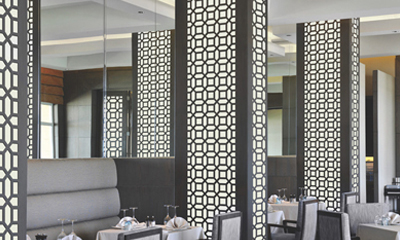The Role of Temporary Pedestrian Fencing in Urban Development
In modern urban environments, managing pedestrian traffic safely and efficiently is a growing concern for city planners and developers. Temporary pedestrian fencing has emerged as an essential tool in ensuring public safety while also facilitating construction and urban development projects. This article explores the significance of temporary pedestrian fencing, its applications, and its impact on urban spaces.
Temporary pedestrian fencing serves multiple purposes in urban settings. First and foremost, it acts as a physical barrier that delineates construction zones, preventing unauthorized access to potentially hazardous areas. Whether it is for road work, building renovations, or public events, these fences provide a clear indication to pedestrians about where they should and should not go. This demarcation is crucial in urban areas where foot traffic is high. By directing pedestrians safely around construction sites, the risk of accidents and injuries is significantly minimized.
Furthermore, temporary fencing plays a vital role in maintaining the flow of pedestrian traffic. When construction or events disrupt usual pathways, these barriers help guide foot traffic effectively. With strategically placed fencing, pedestrians can navigate around obstacles without confusion, ensuring that sidewalks remain accessible and organized. This organized flow not only enhances safety but also improves the overall experience of urban navigation for city dwellers and visitors alike.
temporary pedestrian fencing

In addition to safety and navigation, temporary pedestrian fencing also contributes to the aesthetic aspects of urban development. Companies often utilize visually appealing designs for their fencing, turning an otherwise unsightly construction site into a more attractive environment. For example, colorful graphics or branding can be displayed on the fencing, transforming it into a marketing opportunity while simultaneously drawing attention to the project underway. Integrating art and design into temporary fencing can enhance the visual appeal of streetscapes, making cities more vibrant and engaging.
Moreover, temporary pedestrian fencing is an environmentally friendly solution in urban development. Many modern fencing options are made from recyclable materials, thus reducing waste in construction activities. The use of temporary solutions also allows for flexibility in urban planning, as these fences can be erected and dismantled as needed, minimizing the long-term footprint of construction projects. This adaptability is essential in dynamic city environments where plans can change rapidly to accommodate new developments and community needs.
The challenges associated with implementing temporary pedestrian fencing should not be overlooked. One significant issue is ensuring that the fencing is adequately secured and maintained throughout its use. Poorly installed or damaged fencing can lead to safety hazards, undermining the very purpose it serves. Additionally, ongoing communication with the public is vital; ensuring that pedestrians are aware of fencing installations and knowing alternative routes can prevent frustration and confusion.
In conclusion, temporary pedestrian fencing is a crucial component in the landscape of urban development. It enhances safety, facilitates pedestrian movement, and can even contribute positively to the aesthetic characteristics of city spaces. As urban areas continue to evolve, the importance of effective traffic management and safety measures cannot be overstated. By embracing innovative solutions like temporary pedestrian fencing, cities can create safer, more navigable, and enjoyable environments for all who inhabit and visit them. As urban planners look to the future, the role of such fencing will undoubtedly remain significant in shaping the urban experience.
-
Why Galvanized Trench Cover Steel Grating Resists Corrosion
NewsJul.10,2025
-
The Versatility and Strength of Stainless Expanded Metal Mesh
NewsJul.10,2025
-
Load Calculations in Steel Grating Platforms
NewsJul.10,2025
-
Keeping Pets and Kids Safe with Chicken Wire Deck Railing
NewsJul.10,2025
-
Hole Diameter and Pitch for Round Perforated Metal Sheets
NewsJul.10,2025
-
Aluminium Diamond Mesh in Modern Architecture
NewsJul.10,2025
Subscribe now!
Stay up to date with the latest on Fry Steeland industry news.

